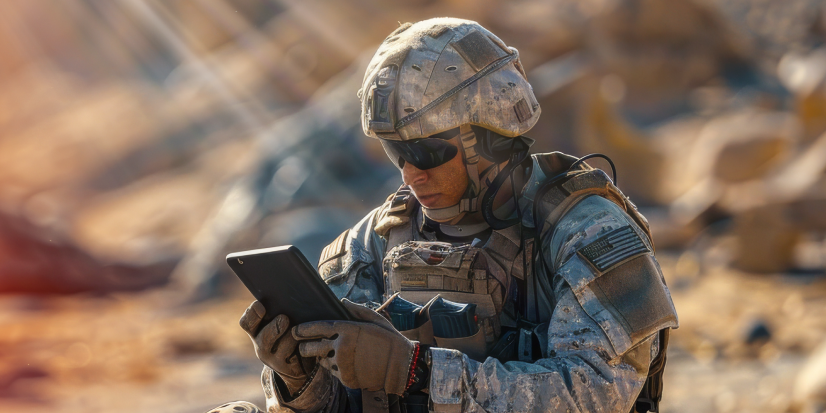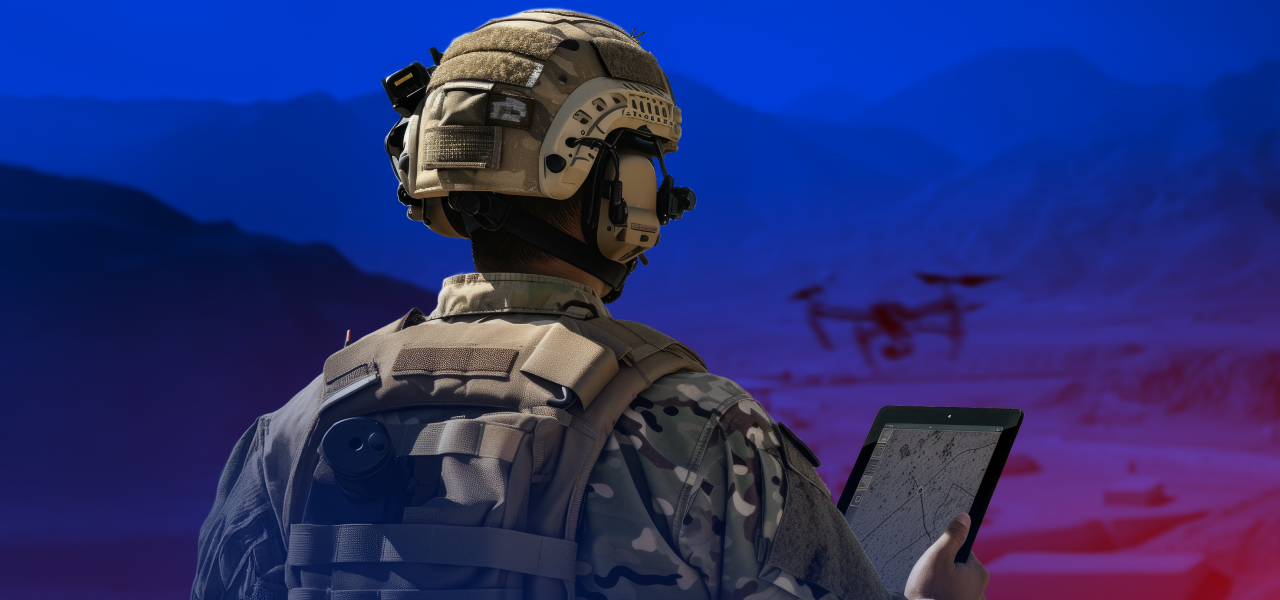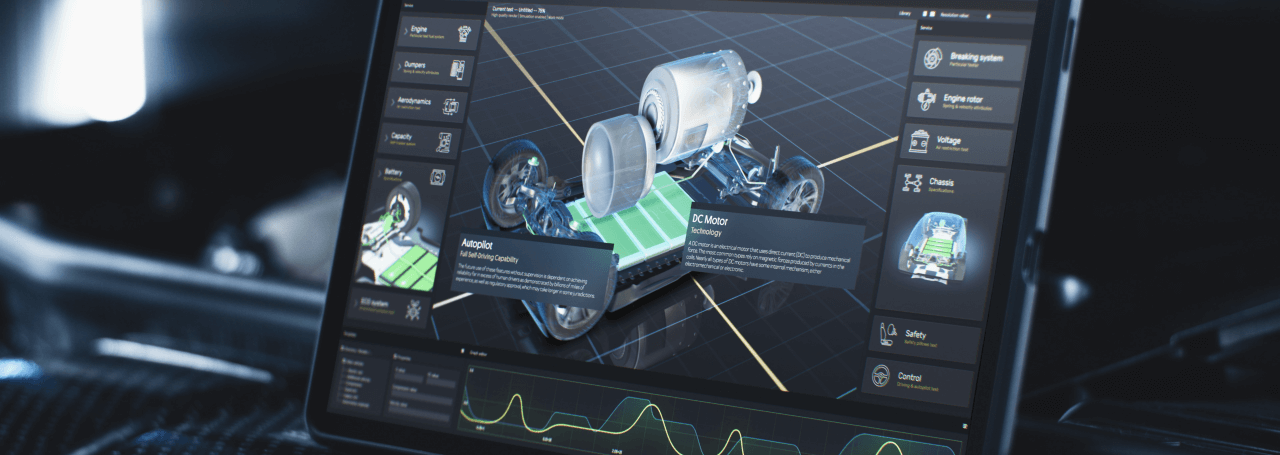PART 2.
Key considerations and technologies
The first part of the article discusses how advanced military displays enhance operational efficiency, safety, and reliability by meeting strict environmental and electromagnetic standards, focusing on durability, power efficiency, and compliance with military-specific requirements. Go to Part 1.
Building on the foundational concepts discussed in Part 1, this article delves deeper into the specific technologies and design considerations essential for military display systems. In military applications, the choice of display technology is not merely about visual clarity but also involves balancing factors such as power efficiency, durability, and security. This section explores the critical importance of readability, lightweight construction, and durable materials, alongside the rigorous certification standards that govern military equipment. Additionally, we will examine specialized requirements, such as Tempest certification, that protect sensitive information from electromagnetic surveillance, ensuring both the functionality and security of military devices in the most challenging environments.
Topics covered:
- Preferred display technologies for military use
- Ruggedness, weight, and power consumption in device design
- Material choices and glass types for military applications
- Design process and certification standards
- Special requirements: tempest certification and electromagnetic shielding
- Project longevity and maintenance
Preferred display technologies for military use
When designing military devices, selecting the appropriate display technology is crucial. Among the various options, Thin-Film Transistor (TFT) displays are the most prevalent due to their balance of readability, contrast, and power efficiency. However, within TFT displays, different backlight configurations offer distinct advantages (learn more here):


Transmissive TFTs: These are standard in military equipment, offering high contrast and good visibility in various lighting conditions. However, in direct sunlight, there may be a reduction in contrast, known as washout, or the need for stronger backlighting, which leads to increased power consumption. Learn more about it here.


- Transflective TFTs: While these may not match the contrast levels of transmissive displays, especially when the backlight is off, they offer significant power savings. This trade-off is acceptable in scenarios where extended battery life is more critical than perfect image quality.
In military applications, where power efficiency can be a matter of operational effectiveness, choosing transflective displays might allow devices to operate for several days longer, even if color accuracy is slightly compromised. Learn more here.


Ruggedness, weight, and power consumption
Military devices must withstand harsh environments, which necessitates a focus on ruggedness and robustness over image quality. The devices, particularly handheld or soldier-carried units, need to be as lightweight and thin as possible without sacrificing durability. This balance echoes consumer market trends but with an emphasis on durability.
Key design considerations
| Aspect | Military requirements | Design strategy |
| Weight | Lightweight for portability | Minimize thickness without compromising strength |
| Durability | Must withstand rough handling and extreme conditions | Use robust materials and reinforced designs |
| Power efficiency | Extended operation time critical for field missions | Opt for low-power components, such as transflective displays |
Material choices: glass types for military applications
Material selection, particularly for cover glass, is another area where military specifications diverge from other sectors like industrial or medical. While chemically strengthened glass is standard in many industries, military applications require even tougher materials like Gorilla Glass.
Favored for its exceptional strength and thinness, Gorilla Glass can be used in sub-millimeter thicknesses without compromising durability. This makes it ideal for military devices that must be both lightweight and resistant to damage.
Design process and certification standards
Designing military devices is heavily guided by certification standards—primarily by MIL-STD-810 and MIL-STD-461, read more here. While customers often provide specific requirements, the design process involves a collaborative effort to ensure that all necessary checkpoints are met. For customers who may lack experience in certain areas, such as display technology, the manufacturer’s expertise from previous projects becomes invaluable.
The design process is typically structured as follows:
- Initial consultation: Understanding the customer’s needs, including size, resolution, brightness, and power requirements.
- Requirement checklist: Establishing a comprehensive list of necessary features and certifications.
- Design and testing: Developing the display and related electronics, ensuring compliance with all military standards.
Special requirements: TEMPEST certification and electromagnetic shielding
An important but often overlooked requirement for military displays is Tempest certification. This certification prevents electromagnetic emissions from a display that could be intercepted and decoded from a distance, a potential security risk.
- TEMPEST Shielding: Typically involves using a specialized mesh that blocks electromagnetic waves, preventing them from being read by unauthorized parties. This is critical for maintaining the security and confidentiality of information displayed on military devices.
Project longevity and maintenance
Military projects demand long-term reliability, with devices expected to have a minimum operational life of five years, and often up to ten years or more. This requirement parallels the standards seen in medical device manufacturing, underscoring the importance of durability and long-term support.
Summary
In summary, designing military devices with displays involves a complex interplay of factors including readability, power efficiency, ruggedness, weight and security. TFT displays, particularly in their transflective form (which is an easy customization option created on demand for a standard display), offer an optimal balance for military applications. Meanwhile materials like Gorilla Glass ensure durability without adding unnecessary weight. The design process is deeply intertwined with certification standards, with Tempest certification being a key consideration for ensuring electromagnetic security. Given the long lifespan expected of military devices, the design and production processes must prioritize durability and ongoing support to meet the rigorous demands of military use.
If you’re starting a military device project, it’s best to begin with standard products and work with an experienced manufacturer early on to meet all technical and operational needs effectively.
CHECK OUT RIVERDI’S MILITARY-READY PRODUCTS
Be sure to find the right industrial-grade touchscreen for your military device:
- Need to enhance the brightness and optical performance of your military display?
Choose High Brightness IPS Displays with optical bonding that perfectly reduce the reflection and correct contrast. - In search of the most effective data interchange between graphics and a truly industrial touch controller?
Check BT817Q (EVE 4) product category with revolutionary communication protocol for industrial, medical and military applications requiring beautiful and sophisticated GUI. - Looking for one of the highest resolution (1280×800 pixel) HMI displays based on STM32H7 MCUs?
Choose STM32 STM32 Embedded Displays with high performance enabled by STM32H757XIH6 (2MB Flash, 1MB RAM) microcontroller.
- Need a plug and play HDMI interface and USB-C touch solution?
Pick the HDMI Displays that are high-resolution, high-brightness IPS TFT products with optical/air bonding and industrial grade touch screen as Riverdi’s standard.
CONTACT US
Contact our expert to dive deeper into the industrial-grade military displays for your project.
Having issues with your current technology? Want to learn about frameworks and our clients’ success stories? We are happy to discuss and assist you with your design and R&D challenges.
DISCOVER OUR
Whitepaper
Achieve the perfect user-display interaction with the right Touch Sensor IC. Ever faced issues with phantom touch events or certification? Boost your R&D like a pro with our Whitepaper!



